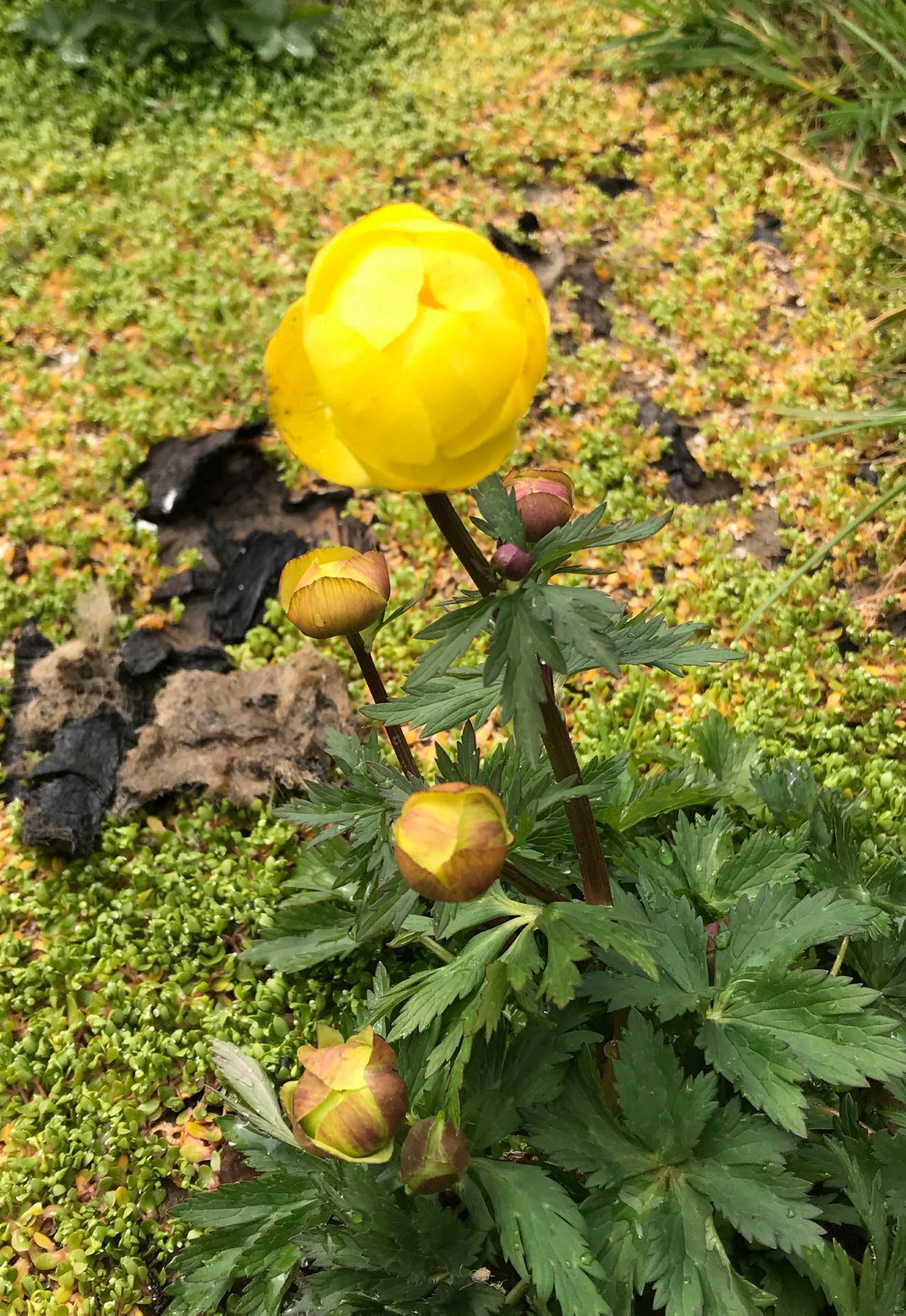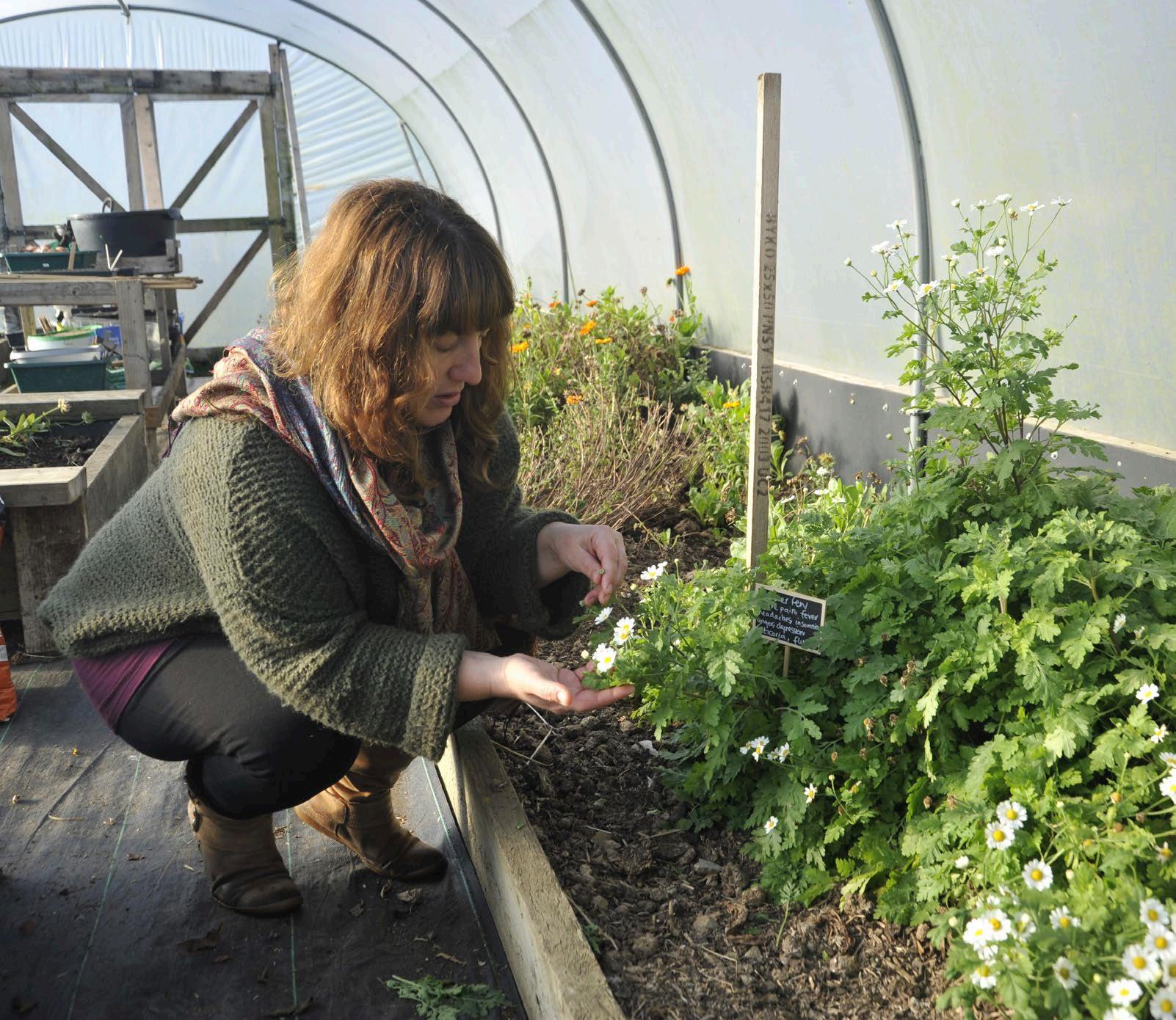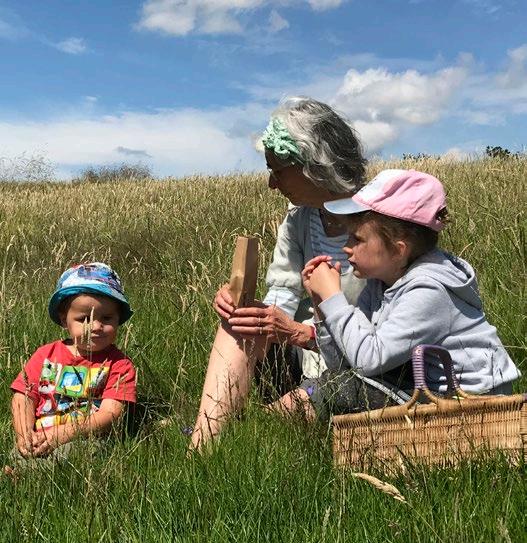
3 minute read
The Green Shoots of Recovery
by Hetty Byrne
A diffuse network of plant nurseries and living seedbanks is helping regenerate wildflower meadows across the Forest of Bowland to benefit bumblebees and other important pollinators.
The Forest of Bowland is one of the last remaining outposts of traditional wildflower meadows in England. Traditional hay meadows across the country once hummed with the buzz of a million pollinators flitting from flower to flower, but with their demise, pollinators are also beginning to suffer from the loss of this vital habitat. But an alliance of local farmers, landowners and volunteers have organised themselves to push back against the relentless quest for higher yields by handraising crops of wildflowers for transplanting into fields which are staging a recovery from the grass roots up. Under the Haytime Rescue project, officers from the Yorkshire Dales Millennium Trust and the AONB gather seed from a number of sites every summer and then send this out for growing on into plugs in volunteers’ gardens. These pollinator patches not only create a stock of seed for future use, but also improve habitats for pollinators in the gardens in which they are grown. Helen fenced off an area of sheep grazed pasture which has never been heavily improved or fertilised – offering an ideal habitat for nurturing wild flowers. This area was seeded with a wildflower mix from the Coronation Meadows at Bell Sykes Farm, near Slaidburn and another patch within this pasture ringfenced to nurture rarer species such as globe flower (trolleus Europeaus), saw wort (serratula tinctoria) and melancholy thistle (cirsium heterophyllum). Helen makes use of some of the meadow species like self heal and yarrow to create her own flower essences as part of her wider holistic therapies practice: The Bee & Blossom Apothecary. Helen’s knowledge of Ayurveda is at the root of all she creates, and this inspired the Rewilding Meadow Project to increase awareness and help people to reconnect to nature while establishing some of our lost native species. But volunteers don’t need a pasture or paddock to participate in Hay Time Rescue – a dedicated patch of a suburban garden is all that’s required.
Advertisement
Helen said: “Wildflowers and restoration are at the heart of the land here and in 2018 I decided to re wild part of the farmland and set aside a field for the hay meadow to bring it back to how I remember it as a child. “We sowed the final yellow rattle seeds with all our intentions for the coming year on the Winter Solstice – December 21st. It was a beautiful evening for everyone and it was so exciting to wait to see what happens. “In spring, daisy and cuckoo flower emerged, followed by the globe flower and then the yellow rattle, which is great for the meadow as it suppresses the rye grass and helps to make space for the wild flowers to grow.” Pollinators in the Forest of Bowland and beyond will benefit from another boost over the next two years through Plantlife’s ‘Meadow Makers’ Green Recovery Challenge Fund project, which will restore over 350 hectares of wildflower meadows across the country. Using the natural seeding methods successfully used by Bowland Hay Time, the project aims to create a larger network of wildflower meadows, which will include new sites in the AONB.

Bowland Hay Time Project Officer Carol Edmondson said: “We use a variety of sources for our wildflower seeds – including the Millennium Seed Bank at Kew Gardens, but what we have found over the years is that seed from plants that have been propagated locally do much better when we introduce them to new sites. “Even quite small changes in humidity and temperature can have a big impact on the young plants and we have a microclimate here in Bowland which is difficult to replicate elsewhere in England. “This is why we are so keen to recruit more local volunteers to grow on wildflowers – because these plants will be acclimatised and adapted to the almost unique climatic conditions in the Forest of Bowland.”



If you would like to grow wildflowers from seed in a patch of your garden or greenhouse, get in touch via the Hay Time website at: www.ydmt.org/grow-wildflowers Or for further information about the Bowland Hay Time project visit: www.forestofbowland.com/Hay-Time-Project










